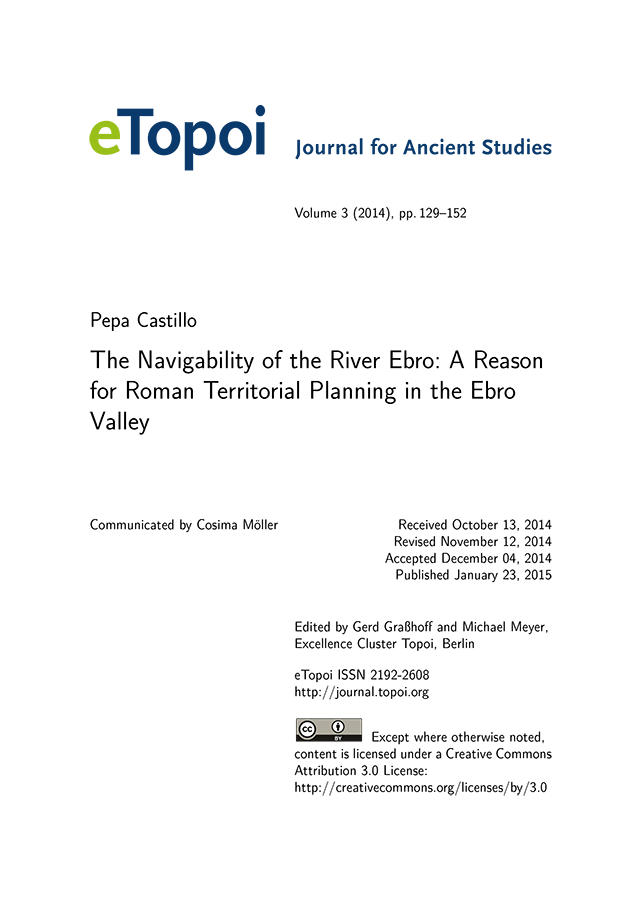The Navigability of the River Ebro: A Reason for Roman Territorial Planning in the Ebro Valley
The aim of this paper is to show how the Roman territorial planning patterns in the Ebro valley were always at the service of the strategic and economic importance given to this waterway by Rome, in the context of a policy of conquest and of economic exploitation. Firstly, the literary and archaeological documentation will be exposed to prove that the Ebro River was navigable upstream as far as Vareia (Varea-Logroño). Secondly, attention will be paid to the territorial limits of the Conventus Caesaraugustanus and to the circumstances which surrounded the origin and promotion of the most important towns in this conventus. It will be shown that this territory was structured and organized based on the Ebro and its tributaries.
Im vorliegenden Artikel soll belegt werden, wie die römische Raumordnung im Ebro-Tal primär auf die strategische und wirtschaftliche Bedeutung des schiffbaren Flusses Ebro ausgerichtet war, welcher der römischen Eroberungs- und Exploitationspolitik diente. Zuerst werden die literarischen und archäologischen Belege dafür angeführt, dass der Ebro flussaufwärts bis nach Vareia (Varea-Logroño) schiffbar war. Im Anschluß werden die territorialen Begrenzungen des Conventus Caesaraugustanus behandelt und die Umstände, unter denen die wichtigsten Stadtgemeinden dieses conventus gegründet wurden und aufstiegen. Es wird gezeigt, dass dieses Gebiet anhand des Verlaufs des Ebro und seiner Nebenflüsse strukturiert und organisiert wurde.

